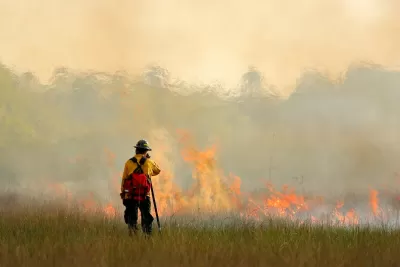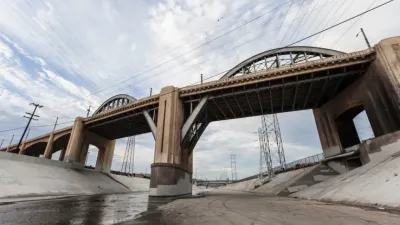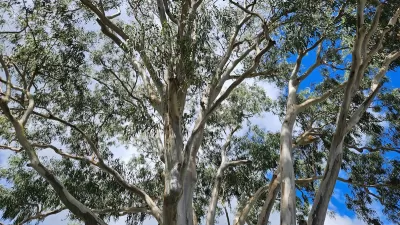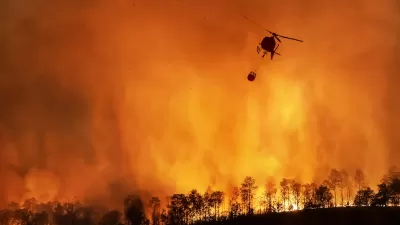Federal firefighting forces, already underresourced, are being slashed even as wildfires become a year-round problem.

Federal funding and staff cuts are undermining state and federal agencies’ ability to prevent and fight wildfires, according to reporting by Mark Olalde for Pro Publica.
In the wake of devastating fires in the Los Angeles region, state and local agencies in California and across the country need support more than ever. Yet “The uncertainty has limited training and postponed work to reduce flammable vegetation in areas vulnerable to wildfire. It has also left some firefighters with little choice but to leave the force, their colleagues said.”
After recent cuts, some seasonal workers’ contracts were suspended, while firefighters headed to support a major prescribed burn in Florida were turned back. “Prescribed burns help prevent catastrophic wildfires by clearing vegetation that serves as fuel, and the meticulously planned 151,434-acre Florida fire — to cover more than six times the land area of nearby Miami — was also meant to protect a Native American reservation and improve ecological biodiversity.” Roughly two-thirds of prescribed burns in the nation are in the Southeast, where they help minimize fuel for naturally occurring fires and promote biodiversity.
Federal firefighter forces already faced challenges in hiring and retaining workers due to low pay and high-risk work. Now, agencies are unsure how to proceed, or when — and if — they will have access to resources again.
“All this comes as wildfires are growing larger and more catastrophic,” Olalde points out. “The area of land burned annually over the past decade was 43% larger than the average since the federal government began tracking it in 1983, according to data from the National Interagency Coordination Center.”
FULL STORY: Trump’s funding cuts leave the nation vulnerable to catastrophic wildfire

Alabama: Trump Terminates Settlements for Black Communities Harmed By Raw Sewage
Trump deemed the landmark civil rights agreement “illegal DEI and environmental justice policy.”

Planetizen Federal Action Tracker
A weekly monitor of how Trump’s orders and actions are impacting planners and planning in America.

The 120 Year Old Tiny Home Villages That Sheltered San Francisco’s Earthquake Refugees
More than a century ago, San Francisco mobilized to house thousands of residents displaced by the 1906 earthquake. Could their strategy offer a model for the present?

Ken Jennings Launches Transit Web Series
The Jeopardy champ wants you to ride public transit.

BLM To Rescind Public Lands Rule
The change will downgrade conservation, once again putting federal land at risk for mining and other extractive uses.

Indy Neighborhood Group Builds Temporary Multi-Use Path
Community members, aided in part by funding from the city, repurposed a vehicle lane to create a protected bike and pedestrian path for the summer season.
Urban Design for Planners 1: Software Tools
This six-course series explores essential urban design concepts using open source software and equips planners with the tools they need to participate fully in the urban design process.
Planning for Universal Design
Learn the tools for implementing Universal Design in planning regulations.
Clanton & Associates, Inc.
Jessamine County Fiscal Court
Institute for Housing and Urban Development Studies (IHS)
City of Grandview
Harvard GSD Executive Education
Toledo-Lucas County Plan Commissions
Salt Lake City
NYU Wagner Graduate School of Public Service





























